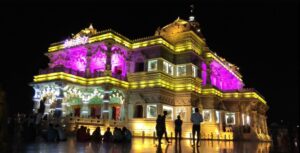Plateau Tourism: Exploring Nature’s Pinnacle – Plateaus, with their vast landscapes and unique ecosystems, offer a distinctive charm to avid travelers seeking both adventure and tranquility. From the mesmerizing Tibetan Plateau to the rugged beauty of the Colorado Plateau, these elevated regions have become increasingly popular among tourists. In this article, we will delve into the allure of plateau tourism, exploring the unique features, popular destinations, adventure opportunities, cultural richness, and the impact on local communities.
Introduction
Plateau tourism is not just about reaching elevated landscapes; it’s a journey into nature’s grandeur. These high-altitude regions, characterized by flat or gently rolling terrain, captivate the hearts of those who yearn for something beyond the ordinary. The appeal lies in the unique combination of breathtaking scenery, diverse flora and fauna, and climatic variations that create an unforgettable experience for visitors.
Unique Features of Plateaus
Breathtaking Scenery
Plateaus, often referred to as nature’s canvases, boast panoramic views that leave visitors in awe. The vast stretches of open land, surrounded by majestic mountains, create a visual spectacle that is unmatched. Whether it’s the Tibetan Plateau’s stark beauty or the red rock canyons of the Colorado Plateau, each destination has its own story to tell through its mesmerizing landscapes.
Diverse Flora and Fauna
One of the key attractions of plateau tourism is the opportunity to witness a diverse range of plant and animal life. Plateaus, with their varying altitudes and climates, support unique ecosystems. From rare alpine flowers to elusive wildlife, these regions provide a haven for nature enthusiasts and wildlife photographers.
Climate Variations
Plateaus are characterized by climatic variations that add an extra layer of excitement to the travel experience. Visitors can encounter cool temperatures and even snowfall in high-altitude plateaus, creating a distinct contrast to the warmer surroundings at lower elevations. This climatic diversity makes plateau tourism a year-round adventure.
Popular Plateau Destinations
Tibet Plateau
Known as the “Roof of the World,” the Tibetan Plateau offers a spiritual and awe-inspiring journey. With its ancient monasteries, pristine lakes, and the majestic Himalayas as a backdrop, Tibet attracts those seeking a blend of cultural richness and natural splendor.
Colorado Plateau
In the southwestern United States, the Colorado Plateau stands as a geological marvel. The iconic Grand Canyon, Bryce Canyon, and Arches National Park showcase the plateau’s unique rock formations and vibrant colors. Adventure seekers and nature lovers flock to this region for its unparalleled beauty.
Deccan Plateau
For those exploring India, the Deccan Plateau presents a tapestry of historical monuments, dense forests, and vibrant cities. From the architectural wonders of Hampi to the lush landscapes of Mahabaleshwar, the Deccan Plateau offers a diverse range of experiences.
Adventure Tourism on Plateaus
Plateau tourism goes beyond sightseeing; it’s an invitation to adventure. The flat terrains and elevated cliffs provide the perfect playground for thrill-seekers.
Trekking and Hiking
Plateaus offer a plethora of trekking and hiking opportunities for all levels of adventurers. Whether it’s the Annapurna Circuit in the Tibetan Plateau or the challenging trails of the Grand Staircase-Escalante in the Colorado Plateau, the sense of accomplishment and the breathtaking views make these journeys unforgettable.
Paragliding and Rock Climbing
For those craving an adrenaline rush, plateaus provide ideal conditions for paragliding and rock climbing. Soaring above the Tibetan Plateau or conquering the red rocks of Utah’s plateaus, these activities offer a unique perspective of the landscape.
Wildlife Safaris
Plateau regions are often home to diverse wildlife, and wildlife safaris offer a chance to witness these creatures in their natural habitat. From spotting snow leopards in the Himalayas to encountering bison in the Colorado Plateau, these safaris add an exciting dimension to plateau tourism.
Cultural Richness of Plateau Regions
Beyond the natural wonders, plateau tourism introduces travelers to the rich cultures of indigenous communities residing in these high-altitude areas.
Indigenous Communities
The Tibetan Plateau is home to Tibetan Buddhists, with their vibrant festivals and ancient monasteries. Similarly, the Native American tribes of the Colorado Plateau have a rich cultural heritage, expressed through art, music, and traditional ceremonies. Exploring these communities provides a deeper understanding of the cultural tapestry woven into the plateaus.
Traditional Festivals
Plateau regions celebrate unique festivals that showcase their cultural vibrancy. From Losar in Tibet to the Native American Powwows in the Colorado Plateau, these festivals offer visitors a chance to immerse themselves in age-old traditions and celebrations.
Unique Cuisine
Local cuisine adds a flavorful touch to plateau tourism. Tibetan momos, Navajo fry bread, or South Indian delicacies in the Deccan Plateau—each region boasts its own culinary delights. Exploring local markets and trying traditional dishes becomes an integral part of the plateau experience.
Challenges and Conservation Efforts
As plateau tourism gains popularity, it is crucial to address the challenges it poses to the environment and local ecosystems.
Environmental Impact
Increased footfall in plateau regions can lead to environmental degradation, affecting fragile ecosystems. Soil erosion, pollution, and disturbance to wildlife habitats are some of the concerns that need careful consideration.
Conservation Initiatives
To mitigate the negative impact, various conservation initiatives are being undertaken. Responsible tourism practices, reforestation projects, and community-based conservation efforts aim to preserve the unique biodiversity and maintain the delicate balance of plateau ecosystems.
How Plateau Tourism Boosts Local Economies
Plateau tourism is not just about exploration; it also plays a significant role in boosting local economies.
Job Opportunities
The influx of tourists creates job opportunities for local communities. From guides and hotel staff to artisans selling traditional crafts, tourism becomes a driving force for economic development in plateau regions.
Sustainable Development
Many plateau destinations focus on sustainable tourism, ensuring that the economic benefits reach the local population without compromising the natural beauty of the region. Investments in eco-friendly infrastructure and community-based tourism initiatives contribute to the overall sustainable development.
Choosing the Right Plateau Destination
With numerous plateau destinations to choose from, selecting the right one depends on personal interests and preferences.
Personal Interests
Whether it’s the spiritual journey on the Tibetan Plateau, the geological wonders of the Colorado Plateau, or the historical richness of the Deccan Plateau, travelers should align their interests with the unique offerings of each destination.
Seasonal Considerations
Plateau regions experience diverse climates, and the choice of the season can significantly impact the travel experience. From snow-covered landscapes in winter to blooming flowers in spring, understanding the seasonal variations adds depth to the planning process.
Safety Tips for Plateau Tourism
While plateau tourism promises adventure, it’s crucial to prioritize safety to ensure a memorable and secure journey.
Altitude Precautions
High-altitude destinations come with potential health risks. Travelers should acclimatize gradually, stay hydrated, and be aware of symptoms related to altitude sickness to enjoy a safe visit.
Weather Awareness
Plateau regions can experience sudden weather changes. Travelers should stay informed about the local weather conditions, carry appropriate clothing, and be prepared for unexpected weather fluctuations.
Responsible Tourism Practices
To preserve the natural beauty of plateaus, travelers should adopt responsible tourism practices. This includes minimizing waste, respecting local cultures, and following designated trails to minimize environmental impact.
Photography Tips for Plateau Travelers
Capturing the essence of plateau landscapes requires a keen eye and some photography skills.
Capturing Vast Landscapes
Wide-angle lenses are essential for capturing the expansive vistas of plateaus. Finding unique perspectives, playing with light and shadows, and focusing on the details contribute to creating stunning landscape photographs.
Wildlife Photography
For those interested in wildlife photography, patience is key. Plateaus offer opportunities to capture rare species in their natural habitats. Understanding animal behavior and using telephoto lenses enhance the chances of capturing breathtaking wildlife shots.
Impact of Plateau Tourism on Local Communities
Plateau tourism has a profound impact on the lives of local communities, bringing both positive and negative aspects.
Positive Socio-economic Effects
Tourism contributes to the socio-economic development of local communities by providing employment, supporting small businesses, and fostering cultural exchange. The income generated from tourism often leads to improved infrastructure and educational opportunities.
Cultural Exchange
As travelers engage with local communities, a cultural exchange takes place. Both tourists and locals benefit from this interaction, fostering mutual understanding and appreciation. This cultural exchange adds depth and meaning to the plateau tourism experience.
Future Trends in Plateau Tourism
The future of plateau tourism is shaped by evolving trends that prioritize sustainability and technological advancements.
Sustainable Practices
An increasing awareness of environmental issues has led to a demand for sustainable tourism practices. Future plateau tourism is likely to see a greater emphasis on eco-friendly accommodations, conservation efforts, and responsible travel.
Technological Advancements
Advancements in technology, such as virtual reality and augmented reality, are likely to play a role in plateau tourism. Virtual tours and interactive experiences may become more prevalent, allowing potential travelers to explore plateau destinations from the comfort of their homes.
Social Media Influence on Plateau Tourism
In the age of social media, platforms like Instagram play a significant role in shaping travel trends.
Instagram-Worthy Spots
Certain plateau destinations gain popularity due to their Instagram-worthy spots. The iconic landscapes of plateaus often become viral sensations, attracting more travelers to explore these visually stunning locations.
Virtual Tours
Social media also facilitates virtual tours and live streaming, allowing people to experience plateaus virtually. This trend not only promotes destinations but also influences travel decisions.
Personal Experiences Shared
To provide a personal touch to the article, real-life traveler testimonials and memorable encounters can be included.
Traveler Testimonials
Sharing stories from individuals who have experienced plateau tourism adds authenticity. These testimonials can highlight the emotional and transformative aspects of their journeys.
Memorable Encounters
Detailing memorable encounters with local communities, wildlife, or unique experiences can evoke a sense of adventure and connection, encouraging readers to consider plateau tourism for their next travel adventure.
Conclusion
In conclusion, plateau tourism offers a blend of natural wonders, adventure, and cultural richness. From the vast landscapes of the Tibetan Plateau to the geological marvels of the Colorado Plateau, each destination has its own allure. As travelers embark on plateau journeys, they contribute to local economies, engage in cultural exchanges, and play a role in the conservation of these pristine environments. Plateau tourism is not just a trip; it’s an immersive experience that leaves a lasting impact on both travelers and the high-altitude regions they explore.
FAQs (Frequently Asked Questions)
- Q: Is plateau tourism suitable for all age groups?
- A: Yes, plateau tourism offers activities and experiences suitable for a wide range of age groups. However, individuals with health concerns should consult with a medical professional before embarking on high-altitude journeys.
- Q: How can travelers contribute to conservation efforts during plateau tourism?
- A: Travelers can contribute by practicing responsible tourism, supporting eco-friendly accommodations, and participating in local conservation initiatives.
- Q: Are plateau destinations accessible throughout the year?
- A: The accessibility of plateau destinations depends on the region and seasonal variations. Some plateaus may have specific seasons that are more suitable for tourism.
- Q: What types of accommodations are available in plateau regions?
- A: Plateau regions offer a range of accommodations, from cozy guesthouses to luxury resorts. The choice depends on personal preferences and the level of comfort desired.
- Q: How can travelers prepare for the challenges of high altitudes during plateau tourism?
- A: Gradual acclimatization, staying hydrated, and being aware of altitude sickness symptoms are essential preparations for high-altitude travel.




Pingback: Introduction to XMeet Subscription - Realone